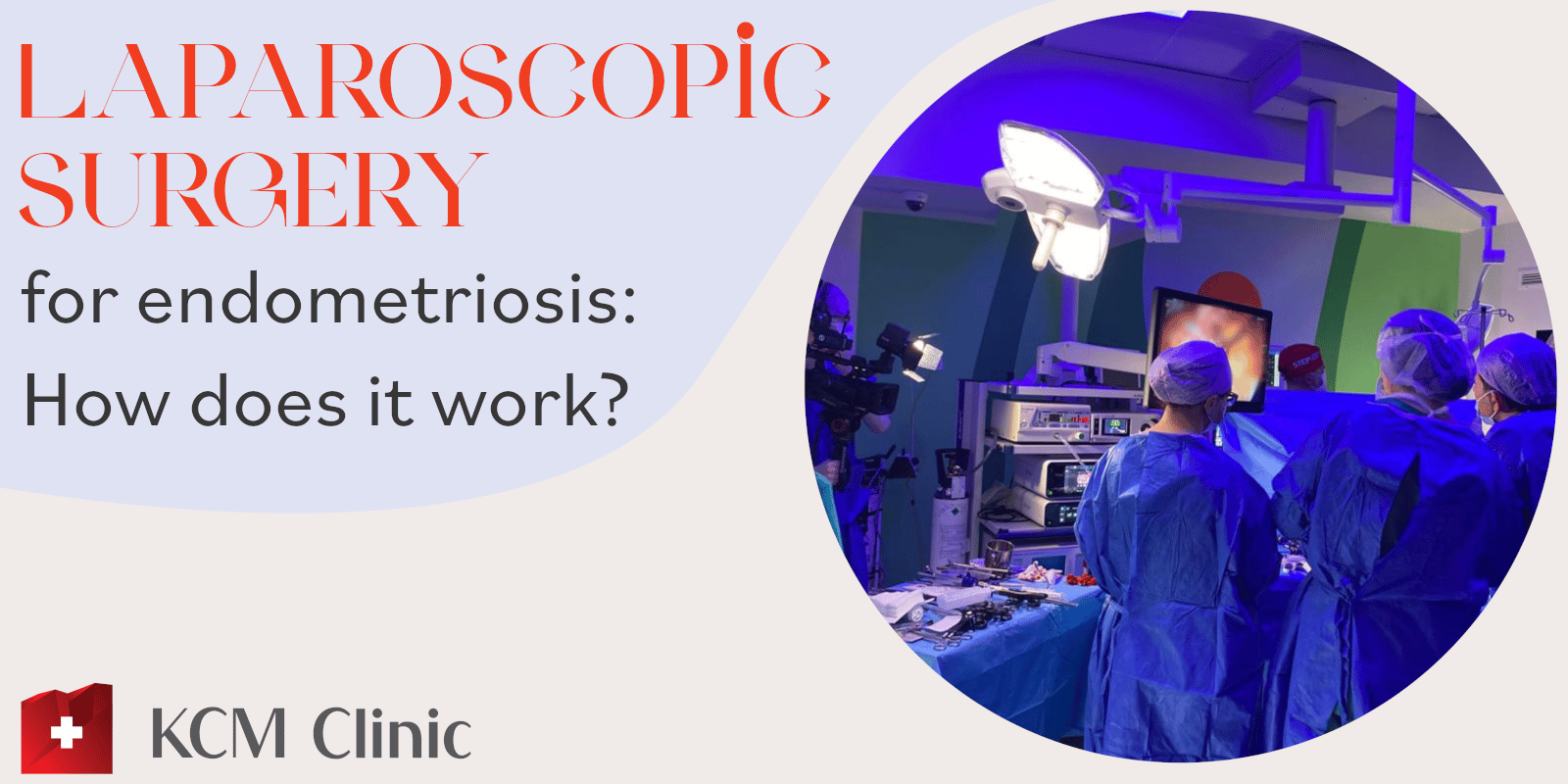Heavy periods, painful cramps and difficulty having children are a few of the symptoms of endometriosis. Experts still don’t know what causes this condition and there is no definitive cure. However, there are treatments that can help women manage the pain and increase their chances of getting pregnant. In many cases, laparoscopic surgery for endometriosis is the only treatment that really helps, not just to treat the condition but also to diagnose it.
In this article, we are going to give you an overview of what endometriosis is, what treatments are available and how laparoscopic surgery can help.
What is endometriosis?
Endometriosis is a condition where a tissue similar to the lining of the uterus (called “the endometrium”) grows in places other than the lining of the uterus, including the ovaries, the fallopian tubes, or the outer wall of the uterus. This condition causes a chronic inflammatory reaction that may result in scar tissue or cysts.
While there is no definite cure for endometriosis, there are treatments that can help you manage the symptoms caused by this condition. Undergoing a laparoscopy can help individuals who:
- Have chronic or severe pelvic pain.
- Need to remove areas of endometriosis in their pelvic area.
- Do not find any help in relieving endometriosis symptoms only by taking medications.
- Find it difficult to get pregnant.
Is there a cure for endometriosis?
Unfortunately not. However, there are treatments that can help minimise the symptoms. Your doctor may recommend treating endometrios
Unfortunately not. However, there are treatments that can help minimise the symptoms. Your doctor may recommend treating endometriosis with conservative approaches before having surgery. It might be necessary to try different treatments or a combination of them to understand what works in your case. Here’s an overview of how endometriosis is typically treated:
- Hormonal therapy: This treatment is typically done with the prescription of birth control pills, progestin therapy, danazol treatment, or aromatase therapy. Hormone therapy can be effective in reducing or eliminating the pain associated with endometriosis as it would slow down endometrial tissue growth.
- Pain medication: Your doctor may prescribe a drug treatment with analgesics, anti-inflammatory drugs or narcotic/opioid analgesics.
- Pelvic-floor therapy, massage therapy, heat therapy, acupuncture, and exercise might also help in some cases.
- Surgery: Laparoscopy, laparotomy (open surgery to remove scar tissue), or hysterectomy (removal of the uterus).
Laparoscopic surgery for endometriosis
Among surgical treatments for endometriosis, laparoscopy is the preferred course in most cases. This surgery is less invasive than laparotomy or hysterectomy and has helped many women reduce their pain or treat infertility.
Laparotomy involves creating one large incision across the abdomen (open surgery). Today, it is only performed when the condition is severe or patients don’t qualify for laparoscopy.
At KCM Clinic, patients diagnosed with endometriosis and who are eligible for laparoscopic surgery for endometriosis will be treated at the Gynecological Outpatient Clinic.
Laparoscopic surgery for endometriosis: Procedure
Depending on how much endometriosis the surgeon has to remove, the procedure can last anywhere from 30 minutes to 6 hours. This is how a laparoscopy for endometriosis works step by step:
- You will be placed under general anaesthesia so you will sleep through the entire procedure.
- The surgeon will make a few small incisions in your abdomen that will be the access points for the surgical instruments.
- Carbon dioxide is injected into your abdomen to raise the abdominal wall and allow the insertion of laparoscopic instruments. This way, the laparoscope has a clear view.
- Then, the laparoscope, a light source and micro-tools are inserted into the abdominal cavity. The monitor obtains a colour image with high magnification and high resolution.
- The surgeon removes the adhesions and the affected tissue. The endometrial cysts of the ovaries are ejected or opened, emptied and coagulated.
- At the end, the surgical instruments are removed and the previously introduced carbon dioxide is released.
- Incisions are closed with cosmetic sutures.
What to expect after a laparoscopic surgery for endometriosis
A few hours after a laparoscopic surgery for endometriosis, you will be able to drink liquids. After around 12 hours, you will be able to start consuming easily digestible foods. You will stay at our clinic for one night and you will be discharged the day after the operation.
You will be given pain medication to ease your recovery but pain after the procedure should be minimal.
Generally, you can return to your daily activities after 3 days. Wait until 7 to 10 days before you go back to your normal life fully. It is recommended that you follow an easily digestible diet for several days after surgery. Our specialists will provide you with a detailed post-op guide for you to follow once you are back home.
Why have laparoscopic surgery for endometriosis?
Even though you have symptoms of endometriosis, laparoscopy is the only way for your doctor to diagnose the condition. In this case, the doctor can directly remove endometriosis scarring and lesions, hopefully giving you immediately some relief.
There are different treatments that can help you ease the pain caused by endometriosis. Depending on the severity of the condition, one of these conservative treatments or a combination of them might work. When these treatments are not enough, removing lesions through surgery is the only possible way for many people to get better.
If you need more information or would like to know more about the procedure, contact us anytime. Our patient coordinators will be in touch with you to discuss your options.
Send Request
Register
Visits, hospital procedures
Bariatric Surgery Center
Plastic Surgery Center
Spine Surgery Center
Dental Clinic
OMEGA Imaging Diagnostic Center
Work hours
KCM Clinic Wrocław
Chat KCM Clinic
Locations
KCM Clinic Jelenia Góra
KCM Clinic Wrocław
Parking








